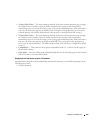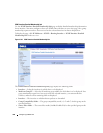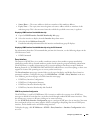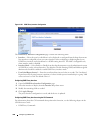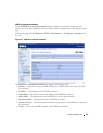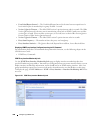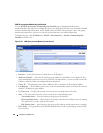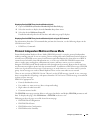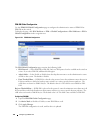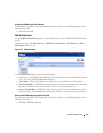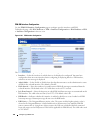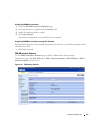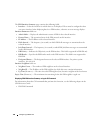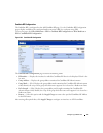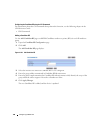
Configuring IP Multicast 701
Displaying Detailed IGMP Proxy Interface Membership Info
1.
Open the
IGMP Proxy Interface Membership Info Detailed
page.
2.
Select the interface to display from the
Interface
drop-down menu.
3.
Select the desired
Multicast Group IP
.
Detailed membership data for this interface and multicast group IP displays.
Displaying Detailed IGMP Proxy Interface Membership Info using the CLI Command
For information about the CLI command that performs this function, see the following chapter in the
CLI Reference Guide:
• IGMP Proxy Commands
Protocol Independent Multicast-Dense Mode
Protocol Independent Multicast-Dense Mode (PIM-DM) protocol is a simple, protocol-independent
multicast routing protocol. It uses an existing Unicast routing table and a Join/Prune/Graft mechanism
to build a tree. PIM-DM creates source-based shortest-path distribution trees that make use of RPF. It
cannot be used to build a shared distribution tree, as is the case in PIM-SM. PIM-DM assumes that
when a sender starts sending data, all downstream routers and hosts want to receive a multicast
datagram. PIM-DM initially floods multicast traffic throughout the network. Routers that do not have
any downstream neighbors prune back the unwanted traffic. In addition to PRUNE messages, PIM-DM
makes use of graft and assert messages. Graft messages are used whenever a new host wants to join the
group. Assert messages are used to shutoff duplicate flows on the same multi-access network.
There are two versions of PIM-DM. Version 2 doesn’t use the IGMP message; instead, it uses a message
that is encapsulated in IP package, with protocol number 103. In Version 2, Hello message is introduced
in place of query message.
PIM-DM is appropriate for:
• Densely distributed receivers
• Few senders -to- many receivers (due to frequent flooding)
• High volume of multicast traffic
• Constant stream of traffic
The PIM-DM menu page contains links to web pages that define and display PIM-DM parameters and
data. To display this page, click IP Multicast > PIM-DM in the tree view.
Following are the web pages accessible from this menu page:
• PIM-DM Global Configuration
• PIM-DM Global Status
• PIM-DM Interface Configuration
• PIM-DM Interface Summary



